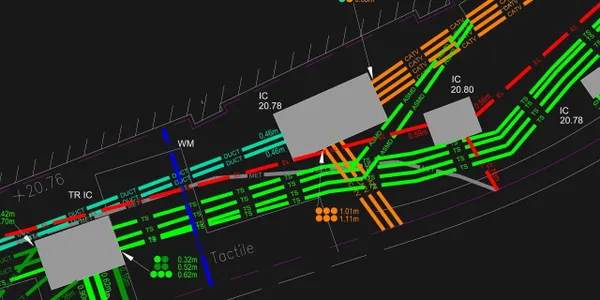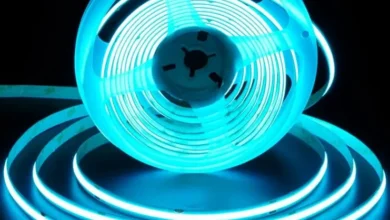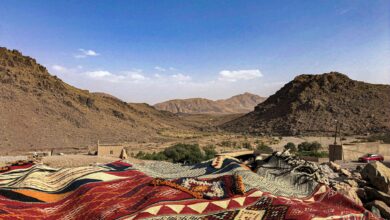The Complete Guide to Working with Professional GPR Surveyors in London

Introduction to GPR Surveying in London
In the fast-paced construction and infrastructure environment of London, safety and precision are paramount. Beneath the city’s busy streets and historic neighborhoods lies a web of underground utilities, aging structures, and unpredictable soil conditions. Navigating this hidden layer without proper knowledge can result in costly mistakes or even dangerous accidents. That’s where Ground Penetrating Radar (GPR) surveyors come into play.
GPR surveyors use advanced, non-invasive technology to detect and map underground features with high accuracy. Working with professional GPR surveyors london is essential for any construction, renovation, or development project that involves breaking ground or altering existing infrastructure. This guide offers a detailed look at what GPR surveyors do, why they’re necessary, and how to make the most of their services in London.
What Is Ground Penetrating Radar (GPR)?
Ground Penetrating Radar is a geophysical method that uses radar pulses to image the subsurface. It works by transmitting electromagnetic waves into the ground and detecting the signals that bounce back from underground objects, voids, or changes in material. These signals are then analyzed and visualized as a radargram, revealing a detailed picture of what lies beneath the surface.
GPR is highly effective for detecting:
-
Utility lines (gas, water, electrical, telecom)
-
Pipes and conduits
-
Voids and cavities
-
Reinforcement in concrete structures
-
Buried foundations or rubble
-
Historical or archaeological features
In a city like London, where layers of infrastructure and history coexist, GPR is a vital tool for accurate and non-destructive subsurface investigations.
Why GPR Surveying Matters in London
London presents a unique set of challenges for construction and development. Centuries of urban growth have left behind a complex subterranean environment. GPR surveyors provide critical insight that helps stakeholders make informed decisions and avoid unexpected setbacks.
Key reasons GPR surveys are essential in London include:
-
Preventing utility strikes that can cause major delays and safety hazards
-
Complying with regulatory standards like PAS 128
-
Supporting planning applications and site feasibility assessments
-
Detecting unknown structures or voids beneath buildings and roads
-
Avoiding costly excavation errors and repair costs
Whether you’re working in the City, Camden, Hackney, or anywhere else in Greater London, GPR surveying ensures you’re not digging blind.
When to Involve GPR Surveyors in Your Project
Timing is everything when it comes to GPR surveys. Involving professional surveyors early in your project can save time, reduce risk, and support smoother planning and execution.
GPR surveyors are commonly brought in during:
-
Pre-construction planning and site analysis
-
Prior to excavation or trenching activities
-
Building extensions or basement developments
-
Roadworks and infrastructure upgrades
-
Environmental or archaeological assessments
-
Renovation or demolition projects involving older structures
By making GPR part of your initial feasibility studies, you can avoid expensive surprises later in the process.
Services Offered by GPR Surveyors in London
Professional GPR surveyors in London offer a range of services tailored to urban construction and infrastructure needs. These include:
Utility Detection and Mapping
GPR can locate both metallic and non-metallic utilities such as plastic pipes, fiber optic cables, and abandoned lines. The data is typically presented in CAD or GIS formats for easy integration into planning software.
Void and Cavity Detection
GPR identifies underground voids that can pose a risk during construction. Detecting these voids early helps engineers design appropriate ground stabilization measures.
Reinforced Concrete Scanning
For projects involving concrete structures, GPR is used to locate rebar, conduits, and post-tension cables before cutting or coring, ensuring structural safety.
Archaeological and Historical Surveys
Given London’s rich history, developers often require non-invasive surveys to identify historical remnants below a site. GPR allows these features to be mapped without disturbing them.
Environmental and Contamination Surveys
GPR helps identify buried tanks, waste pits, and other potential contamination sources, aiding environmental impact assessments.
What to Expect from a GPR Survey
The GPR survey process is typically straightforward and minimally disruptive. Here’s how it generally works:
Site Assessment
The surveyor reviews your project goals, site location, and existing records. They determine the most suitable equipment and methodology based on surface conditions and target depth.
Field Survey
Using a handheld or cart-mounted GPR device, the surveyor scans the site. Depending on the size of the area, this can take a few hours or several days. Markings may be made on-site, or data can be processed off-site for later delivery.
Data Analysis and Reporting
Collected data is processed using specialist software to generate 2D or 3D visualizations. The report includes radargrams, maps, and CAD files showing the position and depth of underground features.
Follow-Up and Collaboration
Professional GPR surveyors work closely with architects, engineers, and contractors to interpret the data and answer any follow-up questions, ensuring clear understanding for all project stakeholders.
Standards and Regulations to Consider
In the UK, GPR surveys are commonly conducted in accordance with PAS 128, a publicly available specification from the British Standards Institution (BSI). PAS 128 sets the benchmark for the accuracy, quality, and methodology of utility surveys.
When hiring a GPR surveyor in London, ensure they are familiar with and adhere to PAS 128 standards. This improves the reliability of the data and ensures compliance with regulatory and insurance requirements.
Choosing the Right GPR Surveyor in London
Not all surveyors offer the same level of service, accuracy, or experience. To find the right partner for your project, look for:
Proven Experience in London
Urban GPR surveys come with their own challenges. Select a surveyor with experience in London’s unique ground conditions, regulatory environment, and planning landscape.
Certified and Qualified Teams
Ensure the team is trained in geophysical surveying, holds relevant certifications, and uses up-to-date equipment that can deliver high-resolution results.
Comprehensive Services
Look for companies that offer GPR as part of a suite of services, including electromagnetic (EML) surveys, CCTV drainage inspections, and topographic surveys for more complete underground mapping.
Clear Reporting and Deliverables
A good surveyor provides clear, detailed, and user-friendly deliverables. These should include maps, digital drawings, and optional 3D models compatible with BIM and CAD systems.
Strong Client Support
From initial consultation to post-survey review, professional surveyors provide ongoing support, answer queries, and collaborate effectively with the rest of your project team.
Common Applications of GPR in London Projects
Ground Penetrating Radar is used across a wide range of sectors and project types. In London, common applications include:
-
Residential property development and basement extensions
-
Commercial office and retail renovations
-
Transport infrastructure upgrades (e.g., Crossrail, TfL projects)
-
Utility maintenance and upgrades for energy companies
-
Redevelopment of brownfield or industrial sites
-
Public space improvements and landscaping
-
Historic building preservation and assessment
Each project benefits from the non-invasive, rapid, and precise data that GPR provides.
Potential Challenges and How to Overcome Them
While GPR is a powerful tool, it does have some limitations. These include:
-
Reduced effectiveness in highly conductive soils like wet clay
-
Difficulty detecting very small or deeply buried objects
-
Signal interference from metal structures or reinforced concrete
To overcome these challenges, experienced surveyors often combine GPR with other methods such as EML locators or borehole surveys. Working with a multi-disciplinary team ensures the most accurate results possible.
The Cost of GPR Surveys in London
The cost of a GPR survey in London varies depending on:
-
Size and complexity of the site
-
Depth of investigation required
-
Need for 2D vs 3D mapping
-
Speed of delivery (e.g., urgent surveys)
-
Integration with other services (topographical, CCTV, EML)
Professional GPR surveys typically range from a few hundred to several thousand pounds. While this may seem like a significant investment, it often prevents much larger costs from utility strikes, project delays, or rework.
Conclusion
Working with professional GPR surveyors in London is a smart, proactive step for anyone involved in construction, development, or land management. GPR offers a reliable, non-invasive way to explore what lies beneath the surface, helping prevent accidents, protect infrastructure, and keep projects on track.
By choosing qualified, experienced surveyors and involving them early in the process, you’ll gain critical insights that can shape your project’s success from start to finish. In a city as complex and dynamic as London, that kind of clarity is not just helpful—it’s essential.



